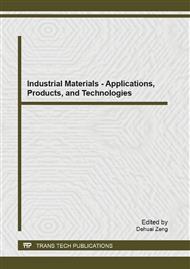p.42
p.47
p.51
p.57
p.61
p.66
p.71
p.76
p.80
Characterizations of the Perpendicular Magnetic Anisotropy in Ultrathin Films of Ta-CoFeB-MgO by X-Ray Photoelectron Spectroscopy
Abstract:
The high magnetic anisotropy may enhance the thermal stability of the magnetic tunnel junction of CoFeB/MgO/CoFeB, which is a promising candidate for the high performance magnetic random access memory (MRAM). However, the interface stabilized perpendicular magnetic anisotropy (PMA) is not completely understood at this moment. In this study, we fabricated separated top and bottom Ta-CoFeB-MgO thin films and found both structures showed strong PMA after a 300 °C post annealing. However, the top structure has thicker magnetic dead layer and much higher coercivity relative to the bottom structures. The asymmetry between the top and bottom Ta-CoFeB-MgO structures may be attributed to the crystalline structure and interface diffusion. X-ray photoelectron spectroscopy depth profile reveals that the boron diffuses mainly toward to the Ta side at CoFeB-Ta interface in both top and bottom structures. It is mainly Ta that appears at the CoFeB-MgO interface of top structure while it is TaOx that appears at the CoFeB-MgO interface of bottom structure. A detailed discussion about the chemical states at the interface in Ta-CoFeB-MgO thin films will be given.
Info:
Periodical:
Pages:
61-65
Citation:
Online since:
August 2013
Authors:
Price:
Сopyright:
© 2013 Trans Tech Publications Ltd. All Rights Reserved
Share:
Citation:


